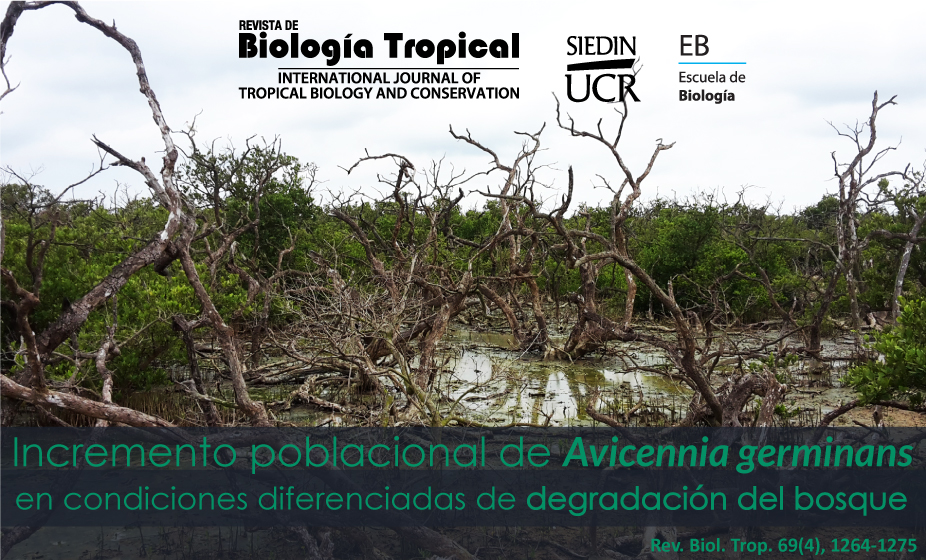Resumen
Introducción: Los manglares están en declive en el mundo, conocer su estructura y regeneración en diferentes niveles de alteración puede ayudar a comprender la dinámica poblacional ante situaciones de estrés. Objetivo: La meta principal del estudio fue analizar la estructura comunitaria y estimar la trayectoria de las poblaciones de Avicenia germinans en diferentes sitios de manglar que presentan tres niveles de alteración. Métodos: Ocho transectos de aproximadamente 500 m de largo y colocados de manera perpendicular a la laguna de Tampamachoco, Veracruz, interceptaron tres niveles de alteración en los sitios estudiados del bosque de manglar. En cada transecto, cuadrantes de 10 x 10 m, 5 x 5 m, y 1 x 1 m sirvieron para contar todos los árboles de mangle por especie y estadio de madurez en 2017 y 2018. Resultados: La especie más abundante fue: A. germinans seguida de Rhizophora mangle y Laguncularia racemosa. Con base en su abundancia, se encontraron diferencias significativas según los tres grados de alteración (AM R = 0.6, P < 0.001), ilustrado en un análisis de ordenación no métrico (nMDS). Una tabla de vida para A. germinans permitió un análisis poblacional que mostró una tasa intrínseca de incremento poblacional (r) negativa para los sitios que presentan alteración (-0.0027 u -0.0774) y positiva (0.0289) en el sitio sin alteración aparente. La supervivencia del estadio de plántula a juvenil varia de 50 % en el sitio no alterados a 5 y 4 % en los otros dos sitios. Conclusiones: Se necesitan medidas para incrementar la sobrevivencia de las plántulas y revertir la disminución de las trayectorias en los sitios con alteración, de otra forma el manglar tendrá una viabilidad reducida en el término medio.
Palabras Clave: fragmentación; perturbación; tablas de vida; dinámica poblacional; categorías de tamaño.
##plugins.facebook.comentarios##

Esta obra está bajo una licencia internacional Creative Commons Atribución 4.0.
Derechos de autor 2021 Revista de Biología Tropical







